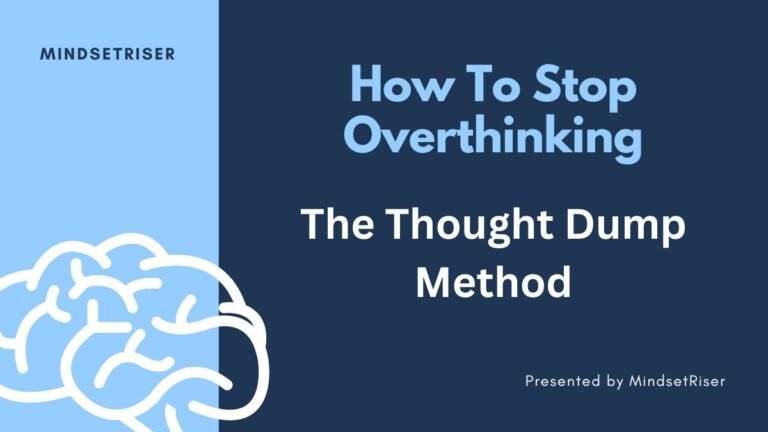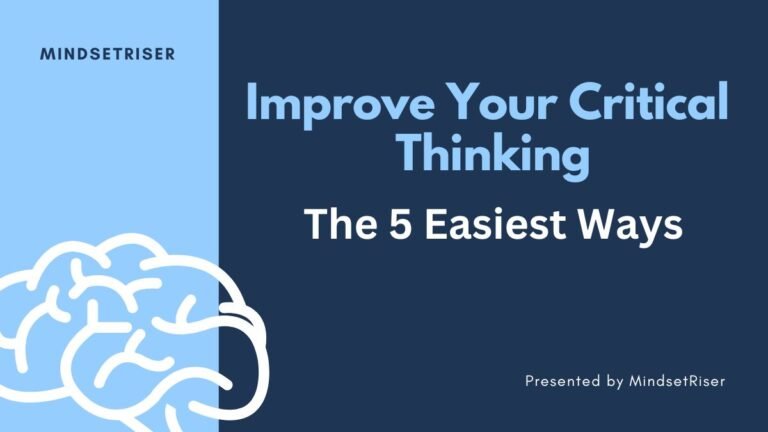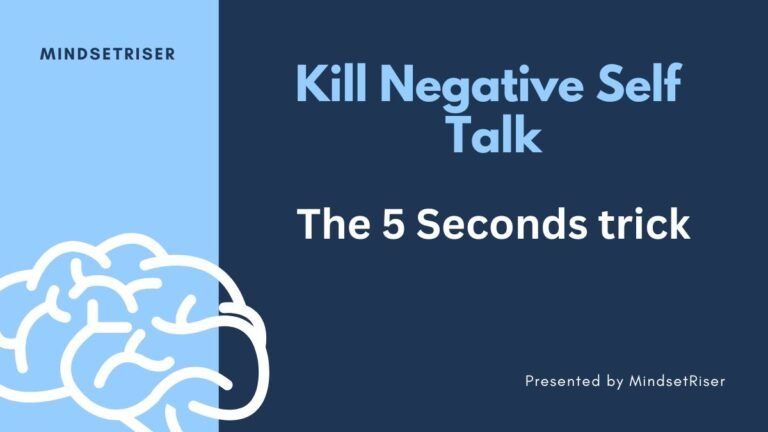The 1-Minute Trick to Control Negative Thoughts (Neuroscience-Backed)
Your brain is wired for negativity. Evolution gave us a “negativity bias”—our ancestors survived by assuming rustling bushes were predators, not wind. But today, that same wiring traps us in stress spirals, self-doubt, and anxiety. The good news? You don’t need hours of meditation or therapy to break free. Neuroscientists and elite performers use a 60-second mental hack to…
Your brain is wired for negativity.
Evolution gave us a “negativity bias”—our ancestors survived by assuming rustling bushes were predators, not wind. But today, that same wiring traps us in stress spirals, self-doubt, and anxiety.
The good news? You don’t need hours of meditation or therapy to break free. Neuroscientists and elite performers use a 60-second mental hack to short-circuit negativity—and you can learn it right now.
The Problem: Why Negative Thoughts Feel So Real (But Aren’t)
Your brain treats thoughts like facts:
- “I messed up” → “I’m a failure”
- “They ignored me” → “Nobody likes me”
Science Says:
- Negative thoughts distort reality (Beck’s Cognitive Triad)
- But they’re just mental events—not truths
The 1-Minute Fix: “Label and Release” (Try It Now)
Step 1: Catch the Thought (20 sec)
- When you notice negativity (e.g., “I’ll never succeed”), pause.
Step 2: Label It (20 sec)
- Say silently: “This is a [TYPE] thought.”
- Catastrophizing: “This meeting will be a disaster.”
- Mind-Reading: “They think I’m incompetent.”
- Overgeneralizing: “I always fail.”
Step 3: Release It (20 sec)
- Visualize the thought floating away like a cloud or write it down and tear it up.
Why It Works:
- Labeling activates the prefrontal cortex (rational brain) and quiets the amygdala (fear center) (UCLA MRI study)
- Creates psychological distance—you’re no longer fused with the thought
3 Real-World Examples
- Public Speaking:
- Thought: “I’ll embarrass myself.”
- Label: “This is a catastrophizing thought.”
- Result: Heart rate drops 20% (Journal of Anxiety Disorders)
- Rejection:
- Thought: “They ghosted me—I’m unlovable.”
- Label: “This is an overgeneralizing thought.”
- Result: Faster emotional recovery
- Work Stress:
- Thought: “My career is over.”
- Label: “This is a future-tripping thought.”
- Result: Clearer problem-solving
Advanced Tactics for Stubborn Thoughts
1. The “5 Why’s” Drill:
- Ask “Why do I believe this?” 5x—most thoughts crumble under scrutiny.
2. Humor Override:
- Imagine the thought in a silly voice (e.g., Mickey Mouse).
3. Body Reset:
- Splash cold water on your face—triggers the mammalian dive reflex (calms panic).
Why This Beats “Positive Thinking”
Forcing positivity often backfires (“Don’t think about a pink elephant!”).
“Label and Release” works because:
- It’s non-judgmental (no inner struggle)
- It’s fast (works mid-conversation)
- It rewires your brain over time (neuroplasticity)
FAQ: Quick Doubt-Busters
Q: What if I can’t stop ruminating?
A: Set a “worry timer”—5 minutes to obsess, then shift gears.
Q: Does this work for trauma?
A: For deep wounds, pair with EMDR therapy—but this hack reduces daily stress.
Q: How long until it feels natural?
A: 7-10 days of practice—thoughts lose their “sticky” power.
Try It Now
- Notice your next negative thought.
- Label it (e.g., “judgment thought”).
- Release it (visualize it dissolving).
Pro Tip: Keep a “thought log” for 3 days—you’ll spot patterns fast.







